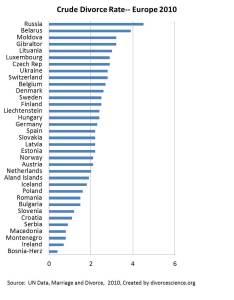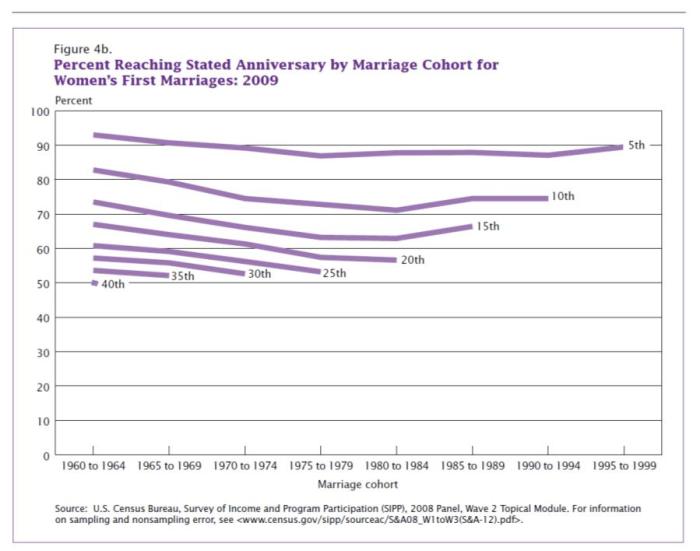There is now an updated list showing the 2012 Divorce rates for 39 European countries.

The United Nations collects marriage and divorce data for the world. This chart provides an illustration of the crude divorce rate (number of divorces per 1000 population) for European countries in 2010. Several countries are not listed which did not report data in 2010. The most recent crude divorce rates for these countries is as follows: Albania, 1.1 (2008), Greece, 1.2 (2008), France, 2.0 (2009), Italy, .9 (2009), Portugal, 2.5 (2009), Great Britain, 2.0 (2009).
More UN demographic reports:




